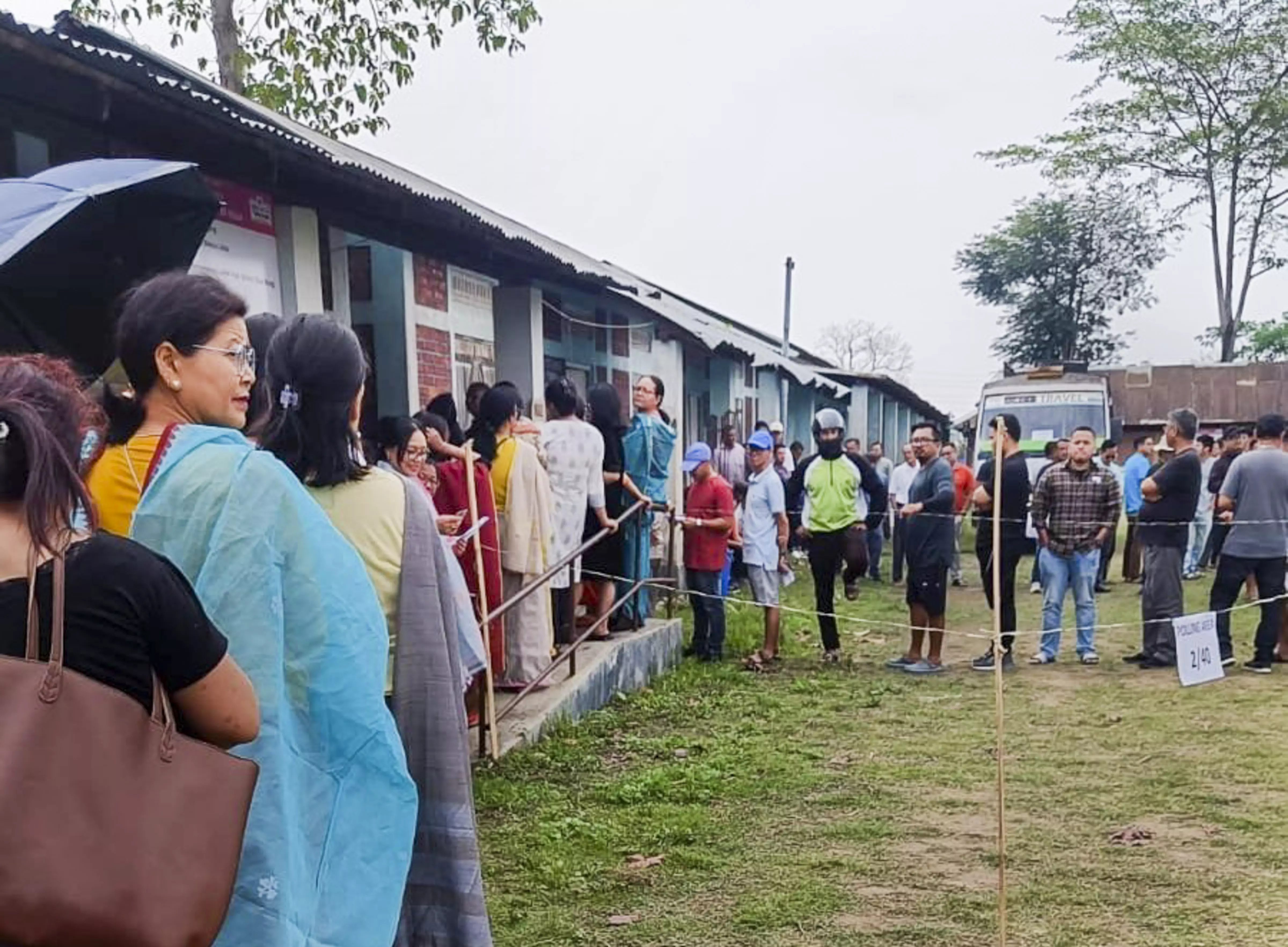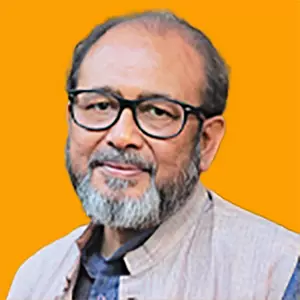
- Home
- India
- World
- Premium
- THE FEDERAL SPECIAL
- Analysis
- States
- Perspective
- Videos
- Sports
- Education
- Entertainment
- Elections
- Features
- Health
- Business
- Series
- In memoriam: Sheikh Mujibur Rahman
- Bishnoi's Men
- NEET TANGLE
- Economy Series
- Earth Day
- Kashmir’s Frozen Turbulence
- India@75
- The legend of Ramjanmabhoomi
- Liberalisation@30
- How to tame a dragon
- Celebrating biodiversity
- Farm Matters
- 50 days of solitude
- Bringing Migrants Home
- Budget 2020
- Jharkhand Votes
- The Federal Investigates
- The Federal Impact
- Vanishing Sand
- Gandhi @ 150
- Andhra Today
- Field report
- Operation Gulmarg
- Pandemic @1 Mn in India
- The Federal Year-End
- The Zero Year
- Science
- Brand studio
- Newsletter
- Elections 2024
- Events
- Home
- IndiaIndia
- World
- Analysis
- StatesStates
- PerspectivePerspective
- VideosVideos
- Sports
- Education
- Entertainment
- ElectionsElections
- Features
- Health
- BusinessBusiness
- Premium
- Loading...
Premium - Events

ONOE requires further detailed scrutiny because the nature of politics and the impartiality of elections depends on how insulated the electorate is from extraneous factors
Whenever major decisions are made, either by the government or political parties, the first issue that requires scrutiny is timing.
By this means, it must be first noted, that just a day after rather tepid celebrations of the Union government’s first 100 days in office, the Union cabinet accepted the recommendations of a high-level committee, headed by former president Ram Nath Kovind, formed on September 2, 2023, to recommend a roll-out plan for Prime Minister Narendra Modi and the Bharatiya Janata Party’s (BJP) pet proposal, One Nation One Election (ONOE).
This committee submitted its report to President Droupadi Murmu (an unprecedented and debatable spectacle of a former President submitting an official report to the sitting Head of State) in March this year.
BJP’s shattered dream
At that time, very few in India, especially from the ruling party, doubted the narrative woven by Modi that the BJP was certain to romp home to its third consecutive victory with a bigger majority for the party and the coalition it headed, the National Democratic Alliance (NDA).
It is not known whether the decision to convene the Cabinet meeting was taken in response to the dominant viewpoint on the government’s first milestone, that it has so far failed in its objective of demonstrating ‘continuity’ in governance, and even came significantly short in being adequately ‘consultative’, unquestionably a necessity if the government is a true coalition, not just in name, as in 2014-24.
‘Rollback regime’
Questions regarding scheduling of the cabinet meeting notwithstanding, the message broadcast with the announcement that preparations for simultaneous elections to the Lok Sabha and state Assemblies are being initiated, was intended to convey that the third successive government headed by Modi follows a consensual approach on major decisions and is no different from the previous two, in terms of its policy objectives, despite reduced numbers. This was duly managed chiefly to erase the label recently affixed to the government:
The government has accepted the Kovind Committee’s recommendation to hold elections to the Lok Sabha and state Assemblies simultaneously as the first step, and municipal and panchayat polls within 100 days of the general election in the next phase.
Contradictions within
Given Modi’s constant endeavour to constantly advertise policies and decisions taken by governments headed by him, the fine print, or the ‘offer document’, in the case of ONOE decision, must be carefully read, like customers are advised to do before purchasing products.
The fine print in this case, obscured from the official briefing on Wednesday by information and broadcasting minister Ashwini Vaishnaw who conveyed imminence of roll-out of ONOE, was Telugu Desam Party (TDP) parliamentary party leader Lavu Srikrishna Devarayalu’s statement that points to the treacherous path ahead for changing to an electoral system that Modi considers politically advantageous.
TDP’s concerns
Although the TDP leader “welcomed” the thought of simultaneous elections, he also added the rider that it “calls for broad discussions. We want it to be discussed on every platform – every booth, every mandal… Feedback has to be collected on the pros and cons.”
He also added that it had to be assessed whether the ONOE scheme would curtail expenses to the extent the government claims. Quite clearly, the TDP is of the viewpoint that the Cabinet's acceptance of the Kovind Committee Report does not mean that a green signal has been given immediately to the lengthy process of ushering in the proposed system.
More discusses needed
Contrarily, much greater discussion will have to be held right down to the grassroots before the legislative process to effect the momentous changes in the Constitution and rules can be initiated. In building this consensus, the government shall have to reach out to various Opposition parties too because the Treasury Benches do not have a required two-third majority for ensuring passage of constitutional amendments.
The proposal for ONOE’s long history cannot be overlooked, however much Modi wishes to portray it as primarily his initiative idea. From the time four decades ago in 1983, when then Chief Election Commissioner RK Trivedi first mooted this idea, the idea has evolved considerably.
Origin of the idea
The baton was later picked up by veteran LK Advani when he was deputy prime minister in the Atal Bihari Vajpayee government. At that time, the BJP was short of a majority, and its leaders were examining ways of tightening their grip on India’s electoral and governing systems.
The Kovind Committee's report, now endorsed by the Cabinet, has also moved beyond the nebulous idea and taken a definitive form since Modi first mooted it in March 2016.
He was then addressing BJP national office-bearers and state unit chiefs, and later in July he once again floated the proposal while interacting with select media editors.
American think-tank
Modi’s motivation back then to moot the proposal barely 20 months after assuming office was the simulation done by an American think tank, the Center for Strategic and International Studies.
It claimed that if simultaneous elections were held in 2014 for state Assemblies, the BJP — on its own or with NDA partners — would have emerged victorious in several states where the Congress was in power.
From the time of its first mooting, the plan was reiterated with considerable alterations and tweaks but the primary justifications for transiting to the proposed system remained unchanged: Substantial expenditure for holding polls in rapid succession; impediments to governance because of the Model Code of Conduct; impact on delivery of essential services and burden on manpower, especially security forces, deployed for conducting elections.
Modi’s exaggeration
In 2016, Modi exaggeratedly stated that the “government’s work comes to a standstill during elections”. The prime minister added that if simultaneous elections become a practice, the Rajya Sabha will also be “in tune”.
The statement ignored the fact that India’s bicameral system was considered necessary by our Constitution makers to ensure checks and balances in the legislative machine.
While justifying the plan, the government often conveys that all polls were held simultaneously between 1951-52 and 1967, after which the cycle was broken. The truth, however, is that the schedule of Assembly elections in some states became disengaged from the parliamentary elections due to elections and politics becoming more competitive and representative.
Seeking hegemonic hold
In contrast to the rare instances from the late 1950s, the simultaneity of elections getting firmly broken coincided with the period when India transformed from a polity characterized by one-party dominance into a multi-party system.
Given this historical fact, it is understandable why Modi mooted the old idea in 2016; the prime minister clearly wished to have hegemonic hold over as many states as possible. Although electoral studies reveal that voters have even voted separately even when parliamentary and assembly elections were held at the same time, temptation prevails over past trends.
Risks of simultaneous elections
There, however, are grave risks in the event of the outcome being the same for the two levels in situations when a highly emotive issue is the central narrative. For instance, in 1984, security of the nation, threat from terrorism and outpouring of grief in favour of the Congress party resulted in the still unprecedented mandate it received from people under the leadership of Rajiv Gandhi.
Yet, it took fewer than two years for the decline of the Congress and the government to begin. This was evident in the form of defeats in some states and results carried the portents of the future, confirmed in the 1989 Lok Sabha polls when the tally of the Congress was slashed to half by voters.
Political developments could have taken a different route in the event of the Congress party having absolute dominance.
Specious argument
One of the four primary reasons forwarded by Modi and his colleagues is that governance comes to a standstill due to serial elections. This argument is problematic because the BJP and its leader cast elections as distraction and its health and impartiality not being the primary factor when judging the health of a democratic country.
The ultimate power in a democracy, like India, is its people.
Democracy or virtual monarchy?
Governments have to accept that they hold office at the mercy of people and mis-governance or failure top delivery promises, provides the electorate with opportunity to ‘correct’ the previous verdict. Giving greater weightage to governance would effectively render a democracy into a virtual monarchy, or where the leader is autocratic.
The Kovind Committee suggested that when a state government loses majority in the period between the five-year cycle, the new assembly elected should have its tenure for only the remainder period.
Empowering act in democracy
Government’s being voted out by the Opposition in the event of them choosing to back people’s sentiment against incumbents and move a no-confidence motion has to be seen as legitimate and empowering acts in a democracy.
It would be improper to affix the label of ‘lame duck’ on the new government because its tenure is shorter than the normal. In such situations, the political leadership will find itself constrained when dealing with the bureaucracy.
Kovind Committee’s dubious claim
The Kovind Committee cited data to claim that most Indians preferred ONOE. The report states that “80 per cent of the 21,558 responses (of people) were in favour of simultaneous elections. The responses came from all corners of the country, including from Lakshadweep, Andaman and Nicobar Islands”.
Not only are the number of respondents miniscule in a country of India’s area and population, but this figure may well be just another instance of emotionally driven response. On issues that evolve matters related to such complex matters like ONOE, people’s response will be impacted by the manner in which the issues have been framed.
To return to the issue of the timing of the acceptance of the Kovind Committee report, we have to take note of the fact that the first 100-day period this time does not match the performance and confidence of Modi’s first two tenures.
Distracting attention from issues
The formal endorsement of this report is little more than an effort by the BJP and its leadership to distract attention from issues that led to Modi's diminished mandate and that of his party and coalition partners.
ONOE requires further detailed scrutiny because the nature of politics and the impartiality of elections depends on how insulated the electorate is from extraneous factors when making their choice.


